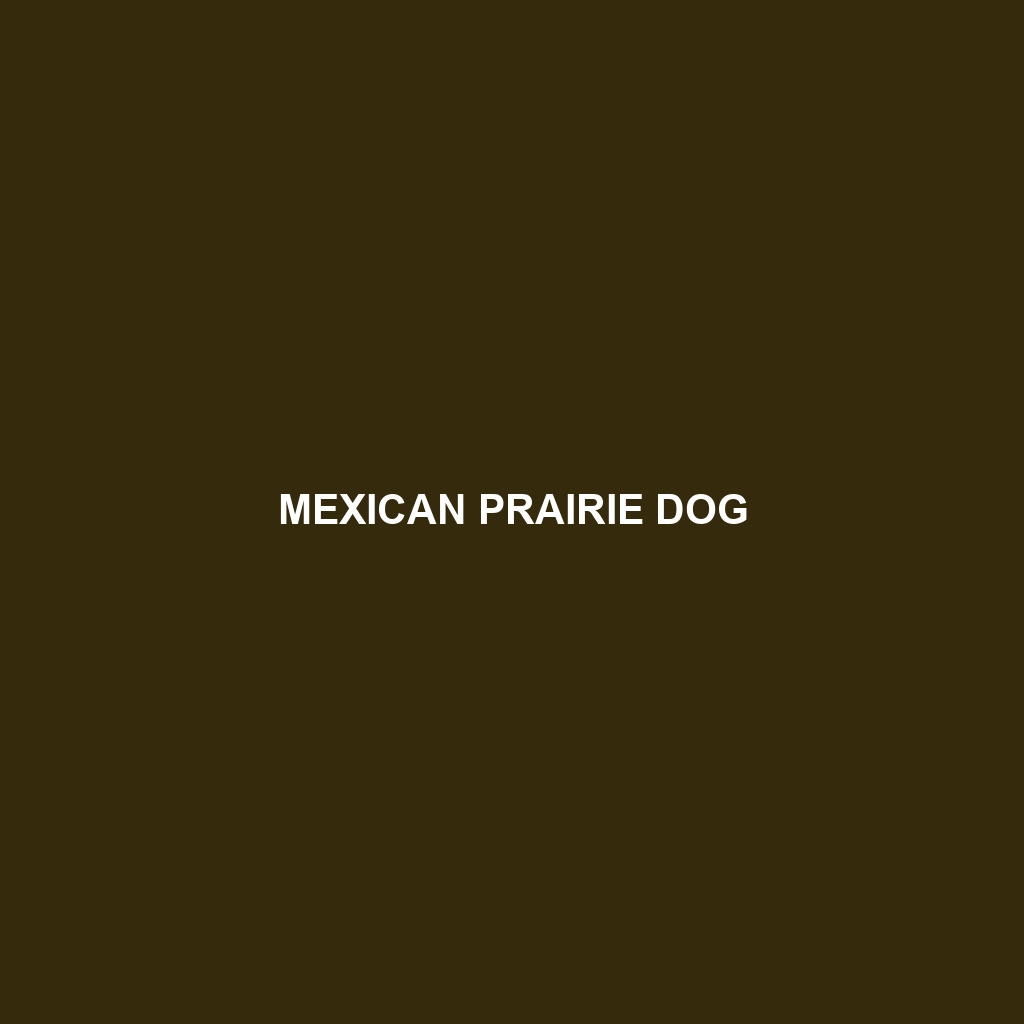Mexican Prairie Dog: A Comprehensive Overview
Common Name: Mexican Prairie Dog
Scientific Name: Cynomys mexicanus
Habitat
The Mexican Prairie Dog primarily inhabits the grasslands and savannas of northern Mexico, particularly in states such as Chihuahua, Coahuila, and Durango. These areas are characterized by a mix of short and medium grass, offering suitable conditions for burrowing and colony living. Their habitat is often associated with arid environments where the soil allows for the creation of extensive burrow systems.
Physical Characteristics
The Mexican Prairie Dog typically measures between 12 to 14 inches in length and weighs around 2 to 4 pounds. Their coats are generally a mix of light brown and tan, with a slightly darker coloration on the back and lighter shades on the underbelly. Distinctive features include a bushy tail and small, rounded ears, as well as their characteristic chirping vocalizations that aid in communication among members of their colony.
Behavior
Mexican Prairie Dogs are highly social animals, known to live in large colonies called coteries. Their social structure is complex, with intricate systems of communication involving various vocalizations. They are diurnal, meaning they are active during the day, and can often be seen foraging for food or engaging in playful behavior. These mammals exhibit sentinel behavior, where one individual stands guard while others feed, helping to alert the group to potential predators.
Diet
The diet of the Mexican Prairie Dog primarily consists of grasses, herbs, and seeds found within their natural habitat. They have a preference for tender shoots and are known to consume a variety of flowering plants. This herbivorous diet is crucial for their health, and they play a significant role in enhancing plant diversity by aerating the soil through their burrowing activities.
Reproduction
Mexican Prairie Dogs have a distinct breeding season that typically occurs in the spring. After a gestation period of about 28 days, female prairie dogs give birth to litters of 3 to 5 pups. The young are born blind and helpless and rely heavily on their mother for sustenance. As they mature, the young begin to venture outside their burrow, learning essential survival skills from their parents.
Conservation Status
The Mexican Prairie Dog is currently classified as “Threatened” by the International Union for Conservation of Nature (IUCN). Their populations have declined due to habitat loss, agriculture, and pest control practices. Conservation efforts are in place to protect their habitats and promote healthy populations.
Interesting Facts
– Mexican Prairie Dogs communicate through a series of barks, growls, and yips, with different sounds signaling various threats.
– They can dig extensive burrows that can reach up to 15 feet deep and create networks that span several acres.
– A single prairie dog can eat up to 40% of its body weight in grass daily, making them significant grazers in their ecosystem.
Role in Ecosystem
Mexican Prairie Dogs play a pivotal role in their ecosystem, acting as a prey species for various predators, including coyotes, hawks, and eagles. Their burrowing helps aerate the soil, promoting plant growth and providing an essential habitat for other species, such as burrowing owls and certain snakes. By maintaining the grasslands, they contribute to the overall health and balance of their environment.
